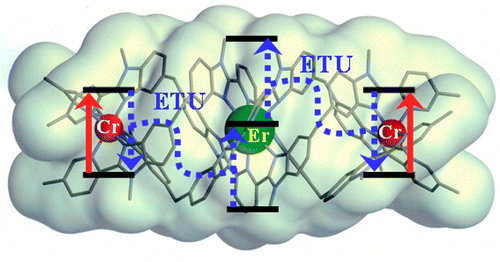-
Excimer-Based On-Off Bis(pyreneamide) Macrocyclic Chemosensors
M. Vishe, T. Lathion, S. Pascal, O. Yushchenko, A. Homberg, E. Brun, E. Vauthey, C. Piguet and J. Lacour
Helvetica Chimica Acta, 101 (2018)


DOI:10.1002/hlca.201700265 | Abstract | Article HTML
A series of bis(pyreneamide) macrocycles, synthesized in two steps from THF, THP, oxepane and 1,4-dioxane, are tested as chemosensors for a large range of mono-, di- and trivalent cations. In their native states, these macrocycles exhibit a strong excimer fluorescence that is quenched upon the addition of the metal ions (alkaline, alkaline earth, p-, d-, and f-block metals). UV-Vis spectrophotometric titrations, cyclic voltammetry, excimer fluorescence quenching and transient absorption spectroscopy experiments helped characterize the On-Off changes occurring upon binding and demonstrate that the highest stability constants are obtained with divalent cations Ca2+ and Ba2+ specifically.
